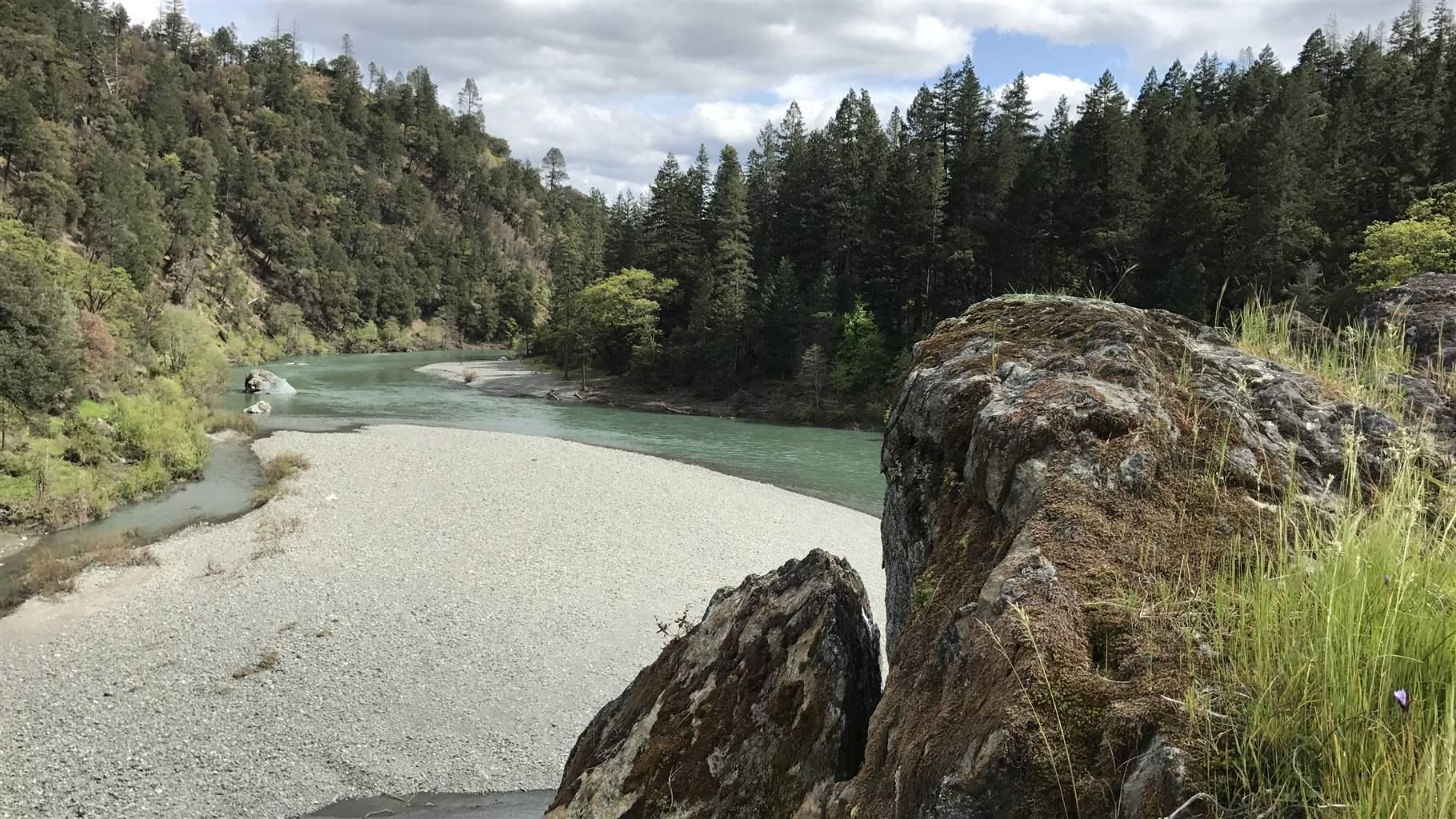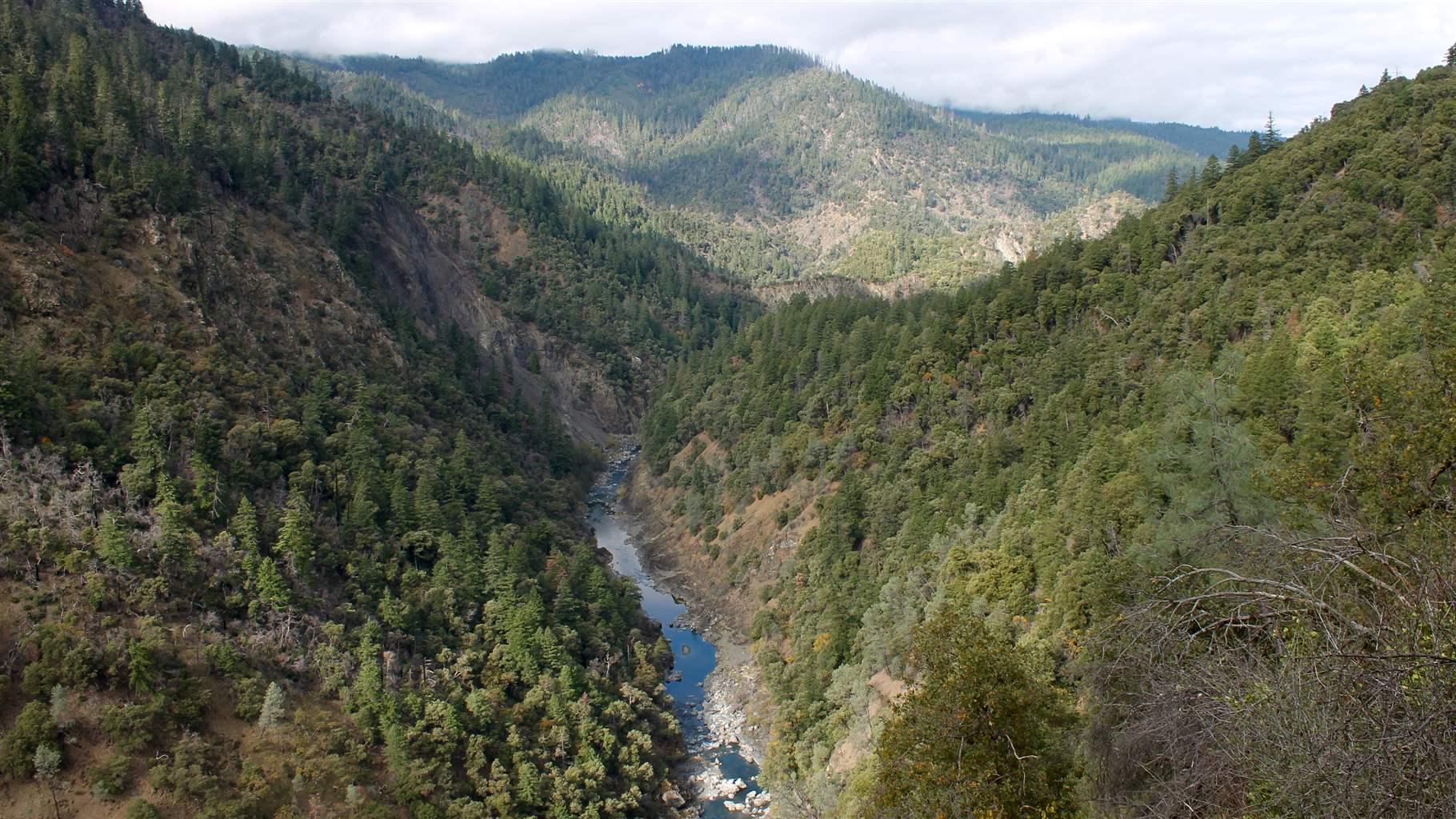Bill Aims to Safeguard, Restore Public Lands in Northwest California
Permanent protections would increase access to recreation areas, boost local economy

Editor’s note: This article was updated July 8, 2019, to reflect introduction of the Northwest California Wilderness, Recreation, and Working Forests Act in the 116th Congress.
Nearly 262,000 acres of national forest and 379 miles of rivers and streams in northwestern California would be permanently protected as wilderness and wild and scenic rivers under legislation introduced April 10 by Representative Jared Huffman (D-CA) and Senator Kamala Harris (D-CA).
Public lands that stretch from Humboldt County’s fog-shrouded redwood forests to Mendocino County’s sunny oak woodlands and grasslands, the soaring peaks of the Trinity Alps Wilderness, and jade-colored waters of the Smith River in Del Norte County would all be safeguarded by the Northwest California Wilderness, Recreation, and Working Forests Act.
The bill was developed after more than six years of dialogue among business leaders, conservationists, sportsmen, mountain bikers, and other stakeholders interested in the use and well-being of these iconic lands. The resulting legislation would better protect and restore some of the region’s unique lands and waters, improve the landscape’s resilience to wildfires like the ones now ravaging the state, and help the local tourism economy benefit from the region’s reputation as one of the best areas in the West for fishing, hunting, hiking, and other outdoor activities.
Many of northwestern California’s ancient forests, clear streams, and rugged mountains lack permanent protection and are open to development, including road construction and logging, that could destroy their wild character. In addition to the wilderness and wild and scenic river protections, the measure would establish a special management area to enhance recreational and scenic values while conserving the area’s wildlife and natural resources, and would earmark more than 51,000 acres as potential wilderness. The bill also calls for a study of the feasibility of a Bigfoot National Recreation Trail to help visitors explore the area’s world-renowned botanical and biological diversity.
The region’s well-being is tied to its woodlands, wildlife, and clean water. And the health and safety of the forest depend on integrating forest restoration and fire management. Because most fires start close to roads and communities, the legislation encourages management strategies, such as selectively thinning roadside vegetation, that would reduce the threat of catastrophic wildfires and enhance the safety of residents and firefighters.
Protected public lands also help create desirable communities—with jobs and business opportunities in recreation, tourism, and local service industries—and increase property values. According to a 2017 report by the Outdoor Industry Association, outdoor recreation generated $92 billion in consumer spending and is directly responsible for 691,000 jobs in California.
The Pew Charitable Trusts has long supported conservation of northwestern California’s public lands and waters and looks forward to congressional action to ensure that they are protected for future generations to enjoy.
John Gilroy directs The Pew Charitable Trusts’ U.S. public lands program.
/16x9_m.jpg?h=1024&w=1820&la=en&hash=533265D6168B127513FD2513E779B77C)













